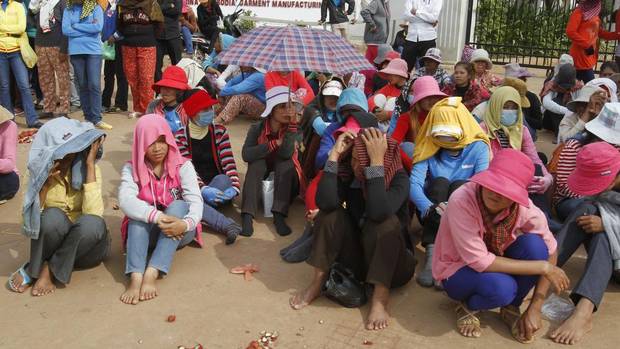Customer Service Team Takes the Heat
After Wilson’s statement regarding that the “thigh gap” was a main reason for sheer pants, Lululemon decided to take a step in the right direction and continue to treat its costumers with respect. In the eyes of Chip Wilson not all pairs of Lululemons are designed to fit every women’s body type, especially plus sized women. He stated in his interview “Quite frankly, some women’s bodies just don’t work for [the pants] … It’s really about the rubbing through the thighs, how much pressure is there over a period of time.” The reaction to this interview was strongly negative, showing women in general that Wilson does indeed believe in the idea of the “thigh gap” and the lack of that in our current society.
The issue with the yoga pants was not from the way the product was manufactured, rather the types of women that are using it based on their body shapes. Consumers were not pleased with this statement of the “thigh gap”, ironically while Lululemon is known for its use of positivity. The company incorporates phrases such as ‘Namaste’ with its products, which is a Sanskrit word meaning the ‘acceptance of all due to their inner spark’. Wilson, along with other name brand corporations have an ideal demographic they are trying to target, which does not include plus size women. Throughout this process, Wilson was not using many, if any, positive PR tactics, causing his customer service team to step up and reassure its customers of its product.

In public relations the social learning theory is the knowledge of different norms that are created from social observation. Stereotypes are created and used commonly in our society, especially in different public relations’ tactics. Not fully aware of his actions Wilson, stated that the “size of the thighs” was a major factor for why the pants were becoming sheer. The idea of the “thigh gap” is one that has been invented in our current generation, therefore Wilson uses this phrase loosely, as if women are immune to the overall idea. Wilson believed that this idea is an accepted on, although he is musing the idea completely and hurting his customers rather than helping them. In reality the “thigh gap” is a physical trait that women are unable to change, since the size of our hips determine whether our thighs touch or not. This overall idea has to do with the structure of our bones, which cannot simply be changed with a simple surgery.target, which does not include plus size women. Throughout this process, Wilson was not using many, if any, positive PR tactics, causing his customer service team to step up and reassure its customers of its product.
Many current and new consumers of Lululemon activewear were very unhappy with the statements Wilson had made in his follow up apology. Wilson explains how “sad” and “sorry” he is towards his employees for putting them through such a difficult situation. This statement angered women throughout the world, causing them to lose faith in Wilson and his overall product. Although this caused Lululemons to lose millions, its customer service team was the opposite of discouraged. They handled each phone call with a positive attitude and great feedback, reassuring its customers of their purchases with Lululemon products.
Many women continue to call in asking what specific sizes would be suitable for their body types. To their surprise they received professional and helpful advice from the employees on the phone. They provided customers with store locations, what sizes they wear personally, and also included her own measurements. A service performing company, Stella Service, tested Lululemon to see how its customer service team was handling its customers, and they were impressed. The customer service team took this negative criticism Wilson had created, turned it around, and assisted its customers with full respect, attention, and advice.
By: Ashmere Prasad
Sources:
http://www.huffingtonpost.com/ty-mcmahan/where-founder-fails-to-be_b_4268917.html
http://happycustomer.stellaservice.com/2013/05/06/lululemon-customer-service-performance-recall/
http://www.webpronews.com/lululemon-founder-blames-women-for-see-through-yoga-pants-problem-2013-11












